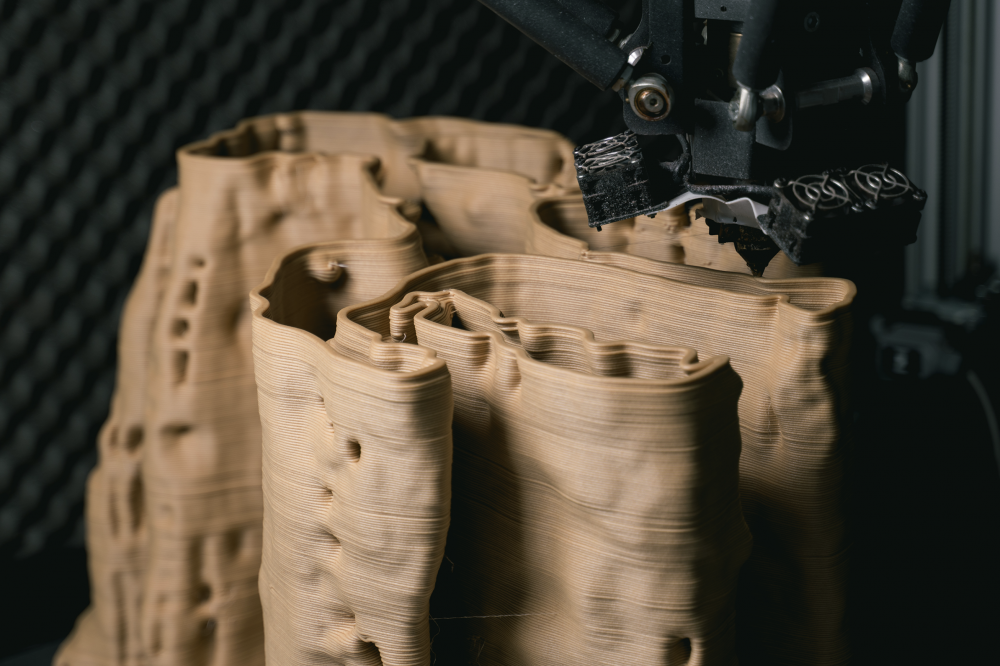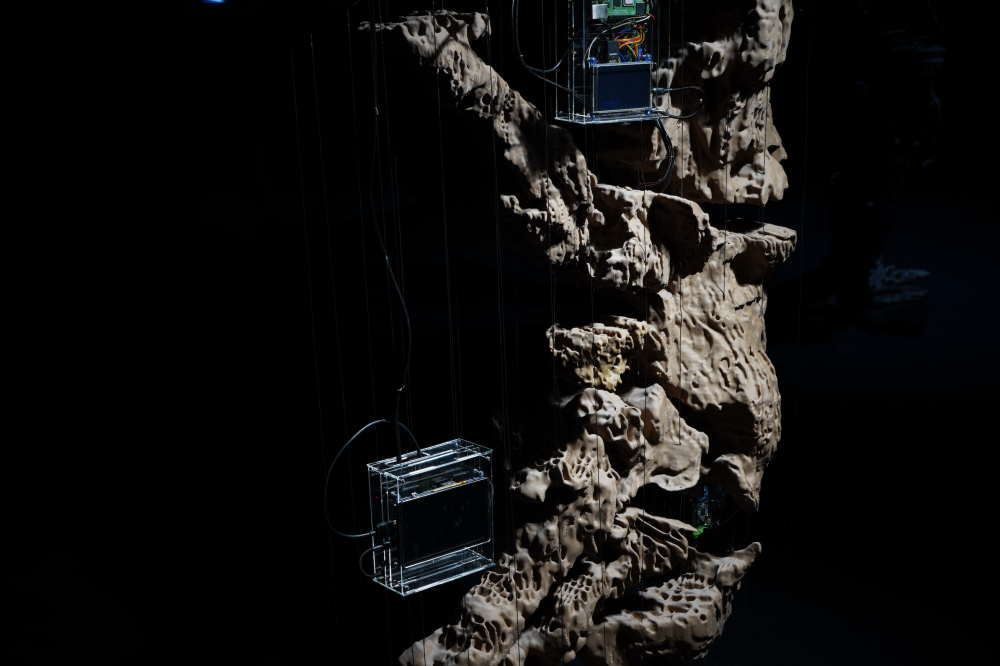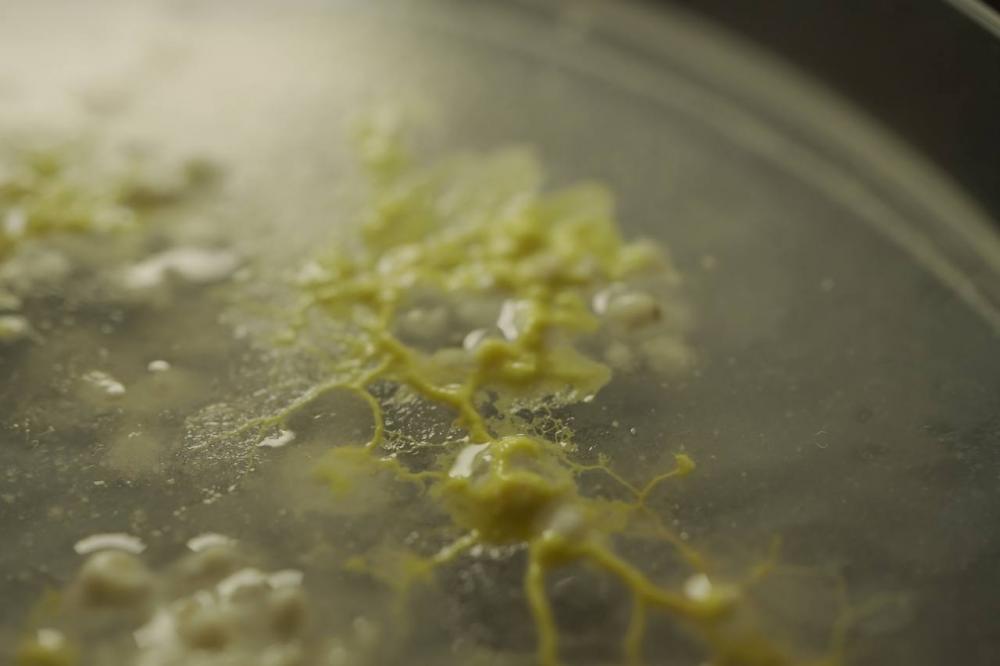Works
Words
As a part of AD Architectural Design, Machine Hallucinations: Architecture and Artificial Intelligence, eNeil Leach, the Cyborganic Living article written by Maria Kuptsova presents new ways to design landscapes that are a rich mix of biological processes and computational algorithms and tools, she generates what she calls ‘cyborganic’ or ‘bio-machinic’ architectural languages.
This text delves into the evolving relationship between technology and nature, highlighting the intertwining of artificial intelligence, synthetic biology, and architecture. It proposes a view where computational advancements are not only reshaping our technological landscape but also influencing our conceptual and aesthetic frameworks, leading to a post-digital and post-natural era.
As a part of DeepGreen, Biodesign in the Age of Artificial Intelligence book by Claudia Pasquero and Marco Poletto, this paper presents ARBOR project - a cyborganic living object, bio-artificially grown by the means of intelligent technologies.The paper presents an approach for reading the intelligence of an organic material by the means of machine learning algorithms in order to contextualise it in a form of bio-technological system
Woods, Fungi and Machines text discusses the potential for the emergence of new design methods arising from the advancements in fields of bio-fabrication and bio-computation. It presents two projects that explore in depth the possibility of design as a collaborative system between different forms of intelligence, focusing primarily on the possibility of integrating biological behaviour into an artificial system. The Arbor and Hyph projects explore design scenarios in which data about biological material is extracted from a living system, processed by machinic algorithmsand reintegrated into synthetic matter.
In the last decade, the proliferation of machine learning, the adoption of multi-scalar robotization protocols, the progress in genetic engineering and synthetic biology, all have conjured the evolution of novel synthetic fabrication strategies in architecture. These are now actualizing cybernertic design methods and embedding bio-computational intelligence which changes our understanding of the relationship between the human and the machinic bodies as well as the relationship between the architectural and the natural landscape. This paper presents a novel theoretical approach, discussing the aesthetical dimension in cybernetic design. The following paragraphs illustrate how bio-computational aesthetics are now being deployed to re-define architecture’s design strategies.
Photobioelectrochemical systems are an emerging possibility for renewable energy. By exploiting photosynthesis, they transform the energy of light into electricity. This study evaluates a simple, scalable bioelectrochemical system built from recycled plastic bottles, equipped with an anode made from recycled aluminum, and operated with the green alga Chlorella sorokiniana. We tested whether such a system, referred to as a bio-bottle-voltaic (BBV) device, could operate outdoors for a prolonged time period of 35 days. Electrochemical characterisation was conducted by measuring the drop in potential between the anode and the cathode, and this value was used to calculate the rate of charge accumulation. The BBV systems were initially able to deliver ~500 mC·bottle−1·day−1, which increased throughout the experimental run to a maximum of ~2000 mC·bottle−1·day−1. The electrical output was consistently and significantly higher than that of the abiotic BBV system operated without algal cells (~100 mC·bottle−1·day−1). The analysis of the rate of algal biomass accumulation supported the hypothesis that harvesting a proportion of electrons from the algal cells does not significantly perturb the rate of algal growth. Our finding demonstrates that bioelectrochemical systems can be built using recycled components. Prototypes of these systems have been displayed in public events; they could serve as educational toolkits in schools and could also offer a solution for powering low-energy devices off-grid.
About

Maria Kuptsova (Мария Купцова) is an artist, architect and educator. In her practice, she creates cyborganic objects, synthetic sculptures, hybrid interfaces, bio-digital drawings, biophilic designs and living architectures. She works with a diverse range of techniques and methodologies including bio-digital fabrication, bio-computation, material programming, multi-scale robotics, micro and macro photography and videography, remote sensing and 3d scanning, among others. The array of material systems and processes she explores in her projects varies from digital bits to synthetic composites, living materials, organic-based filaments, as well as traditional medium such as clay, ceramics, glass, wood, crystals, paints, polymers, working not only with analog but also machine-based techniques.
Maria actively participates in exhibitions worldwide. She has showcased her individual and group work at venues such as the Venice Biennale in Venice, the Centre Pompidou in Paris, TAB Tallinn Architectural Biennale in Tallinn, AUT in Innsbruck, Video Forms Hybrid and Digital Festival in Clermont-Ferrand,
CYFEST 15 International Media Art Festival in Yerevan, the Sergei Kurekhin Center for Contemporary Art in St. Petersburg, the LLUMBCN Festival in Barcelona, Russian Museum in St.Petersburg, GROUND Solyanka in Moscow, NCCA in Kaliningrad, museum PERMM in Perm, among others. She was honored with the Sergey Kuryokhin Prize in 2022 in the category of 'Science Art'.
Maria is a Ph.D. candidate at the Synthetic Landscape Lab at the Leopold-Franzens-Universität Innsbruck. She received her master degree at the Institute for Advanced Architecture of Catalonia (IAAC) in Barcelona. She has taught and conducted research at IAAC in Barcelona, the University of Innsbruck in Austria, the Bartlett School of Architecture in London, the Digital Futures Colloquium, the "Art&Science" Center at ITMO University in St. Petersburg, the Strelka Institute in Moscow, the Higher School of Urbanism in Moscow, and Xi'an Jiaotong-Liverpool University in Suzhou. Together with a team, she initiated and curated the master's program "–Da Digital Art" at FEFU.
















